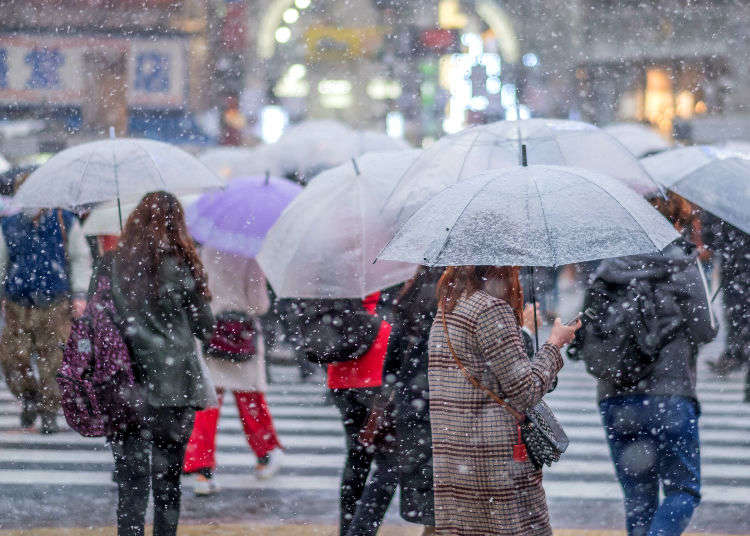
Planning Your Japan Getaway? 10 Tips for Travelling to Tokyo in Winter
- Written by: David McElhinney
Planning a trip to Tokyo in Winter? Look no further! This comprehensive guide will give you the lowdown on what you should expect, what you should bring, must-visit destinations and seasonal recommendations. The Japanese capital boasts a packed winter calendar and here's what you need to know!
In this article:
・Weather
・What to Pack
・Accommodation
・Illumination Events
・Festivals and Other Events
・Hiking
・Warming Winter Food
・Warming Winter Drinks
・Day Trips
・Transport
1. What’s the weather like in Tokyo in winter? Prep for cold!
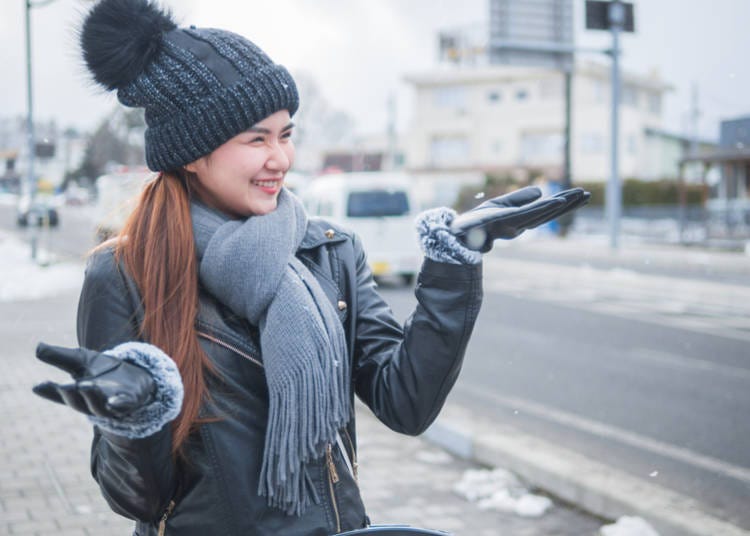
Tokyo's winters are cold, especially after sundown. But the winter also generally brings an end to the rain and carries some clear blue skies with it.
December
In December the weather slowly begins to turn, but not necessarily for the worst. The fresh spring mornings are replaced with a little more of a winter "bite". Although more often than not the skies will be clear and even sunny. Daytime temperatures fluctuate from 10-15 degrees Celsius throughout the month, with night-time temperatures closer to 5 or 6 degrees.
January
As January beckons, the daytime temperatures in Tokyo drop a few degrees, but scarcely more, as the frequent sunny skies and lack of highspeed winds remains constant from the previous month. After dark in January is when it will really start to feel like winter however, with the average temperature in and around 0 degrees. Frost is common and whereas snowfall is not, it is still a possibility. In the event that this happens it can put a halt to public transport—so plan accordingly.
February
February tends to be more of the same, with frosty mornings, an outside chance of snow and precipitation and bitterly cold evenings. Bearing that in mind, it's worth making sure that you pack accordingly.

2. What to Pack for Winter in Tokyo
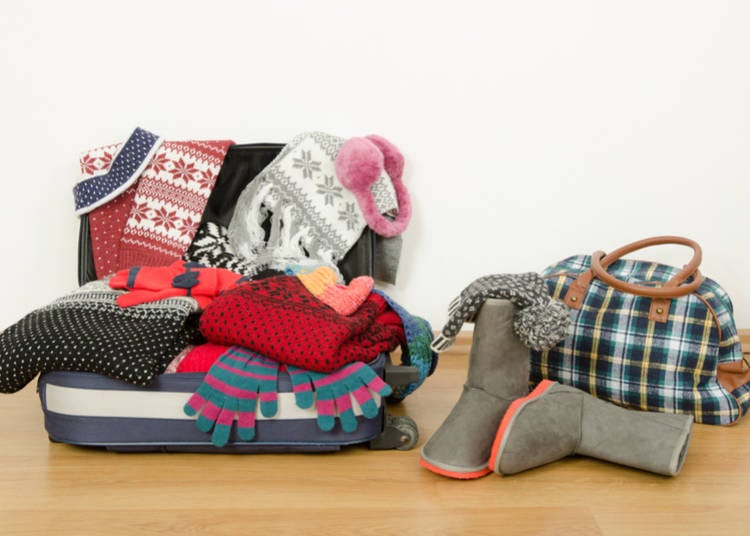
Packing for the winter will vary from traveler to traveler. If you intend to squeeze in a weekend ski trip, go for hike, or even just day trip to the more mountainous reaches of Japan that are on Tokyo's doorstep, then you may need to beef up your luggage a little. Regardless of your intentions, there are some obvious essentials.
Footwear
It may be stating the obvious, but bring warm footwear: like boots or hiking shoes! Your extremities will lose heat first and you'll want your toes to be wrapped up in warm socks and sturdy shoes to avoid this. Also, if there's been a touch of frost overnight then something with grip on the bottom might be better than wearing footwear that lacks friction. You don't want to start your day by going head over heels as you descend a packed stairway into an underground train station. Of course, if you want to go for a walk amongst nature or one of the to one of the outlying mountain hikes near Tokyo, then a decent pair of hiking shoes are a must.

Body
Again, wrap up well. Wearing three layers is common practice in the winter, so plenty of heavy trousers, t-shirts, jumpers and jackets or overcoats will be necessary. If you have thermal gear or heat-tech sports clothing then don't forget to bring it. Long-johns and long-sleeved thermal t-shirts can be a godsend in the middle of a frosty January evening. While rain and snow are not all that common in winter in Tokyo, it's wise to have something waterproof with you too. If you get wet, don’t expect to dry up quickly at this time of year.
Extras
Woolly hats, a good pair of gloves and thick scarves are all highly recommended. While these are probably a given, there a couple of extras items to add just to make sure you are covered.
First of all, a bag – and ideally one that’s rain/snow-proof. One of the first things you notice in Tokyo is that everybody has a bag. Everybody. A backpack is a good way to carry around any excess clothing, gifts or souvenirs and most importantly a place to temporarily store your rubbish. Tokyo has basically no public bins and you constantly see bewildered tourists scarring the streets with empty bottles and cans looking for them. A bag is a great way to carry these hands free until you get back to your hotel.
You may want to bring sanitary masks. You can also purchase these very easily in convenience stores here and you will notice many Japanese wearing them in winter. It's not a bad idea to get in on the act, just to make extra sure you don't catch a cold. After all, it's the last thing that you want on holiday.
The last thing, which is aimed more towards outdoor enthusiasts, is a little bottle of sun cream. It might sound silly in the middle of winter, but the clear skies mean that the sun can be deceptively strong this time of year and that you might otherwise be prime for sunburn.
3. Tips on Accommodation in Tokyo During Winter

Of course, one of the first things that you will need to settle on before you pack your bags is accommodation. To say that Tokyo has a lot of options is quite an understatement. So, here's a few insider tips on the best options for winter travelers.
First off, while we do recommend booking accommodation well in advance. Winter is low season in Tokyo, so you will get a little more leeway with booking closer to your travel date and prices will be more reasonable too!
Hotels with Onsen
There are plenty of hotels, hostels and even capsule hotels in Tokyo that have traditional Japanese hot spring (onsen) bathing facilities. These will be most likely be shared with other guests, split into two sections (one for each sex) and possibly on the small side. Relaxing in a hot spring is one of the joys of the Japanese winter, and this is best way to do it without splashing the cash.
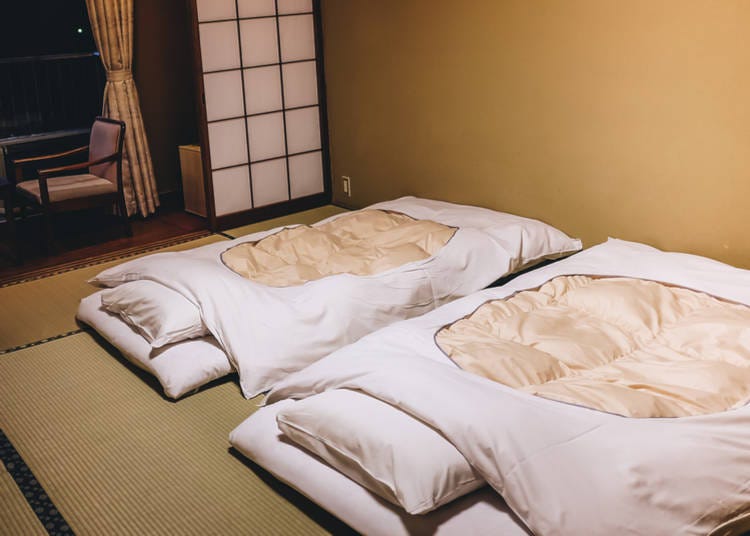
Ryokan
Ryokan are traditional Japanese style hotels, many of which come with onsen facilities as part of the package. Surprisingly there are a lot of these in Tokyo, although they are generally a bit pricier than hotels. However, their interiors exude an aura of relaxation, a striking juxtaposition against the fast-paced world buzzing around outside. This is fantastic way to experience traditional Japanese culture in the heart of the world's busiest modern metropolis. Expect tatami floormats, futon beds, yukata (like kimono) robes and vintage Japanese cuisine.
As mentioned, most ryokan come with shared onsen, which are likely to be considerably less busy than their hotel or public counterparts. Despite their high-end reputation, they can be a great option for all kinds of travelers—whether your flying solo, travelling with a family or on a trip with friends. Those towards the more budget end of the scale (from ¥5,000 - ¥10,000/$50-$100 per person per night) also tend to be more accepting of kids and larger groups.
If you want to bump up the romance a few notches, then there are also ryokan options with private onsen bath tubs in the rooms. These will be pricier (around ¥10,000 a night per person and up), even in the comparatively quieter winter season.
4. Don’t Miss Tokyo’s Incredible Illuminations!
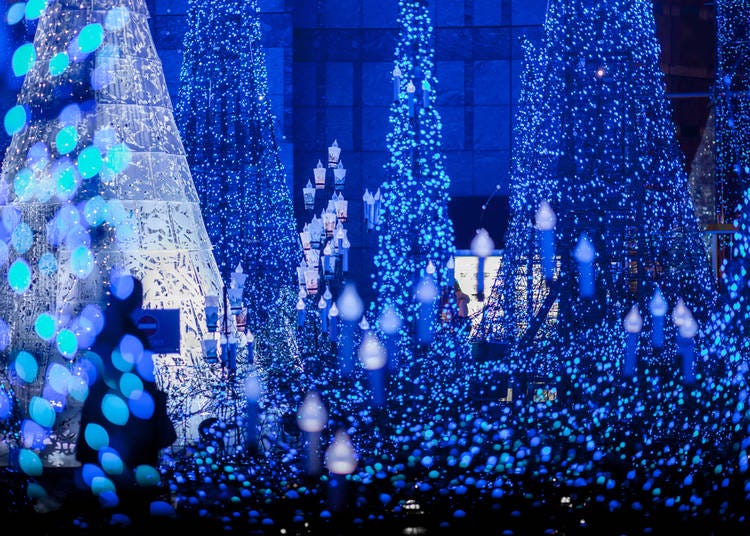
Many areas around Tokyo feature breath-taking visual displays, as a sea of lights engulf the city streets at night. Here are some of the best.
Yoyogi
The winter illumination in Yoyogi Park—located in between Shibuya and Shinjuku—is one of the most magical parkland illuminations you will see all year round. Seeing Yoyogi's 800m-long Zelkova-lined path wrapped in a menagerie of blue lights is truly spectacular.
Dates: late November until New Year's (December 31st)
Roppongi Hills
Roppongi is one of Tokyo's main night-life hubs and boasts a plethora of quality tourist accommodation options. As such, the Keyakizaya winter illumination at Roppongi Hills is one of the city's most popular. One look and it's easy to see why. 1.2million LEDs illuminate the main street in a mixture of shades, from cold wintery blues that epitomise the season to warm amber hues that are designed to represent the contrasting warmth and candlelight. Better yet, the eponymous Tokyo Tower sits grandiose in the background, keeping a watchful eye over the surrounding areas.
Dates: Early November until Christmas Day (December 25th)
Caretta Shiodome
For 3 months the Caretta Shiodome illumination involves short yet spectacular shows that run around every 15 minutes from 5-11pm each evening. The shows are inspired by different themes and source material each year. The 2018 series is once again inspired by Disney Princesses with particular emphasis on recent classics like Tangled and Frozen. With a long running and central city location, this illumination event should not be missed!
Dates: Mid-November until mid-February
5. Make Your Vacation Magical with Tokyo’s Winter Festivals & Events!
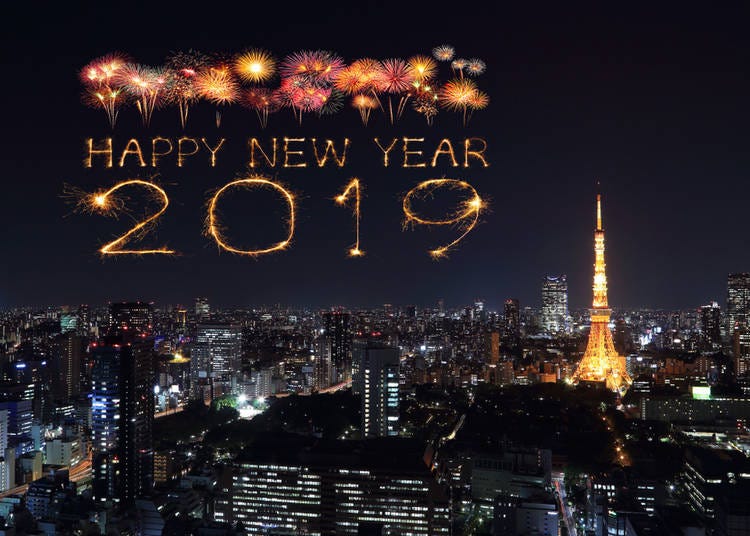
Tokyo's winter festival calendar is packed. The festivities run the gamut from traditional culture and antiques fairs, to seasonal festivities and cultural fusions.
December
Setagaya Boroichi – a 430-year-old flea market in Setagaya (December 15th/16th 2018, January 15th/16th 2019). The archaic looking street of Boroichi Dori plays host to a festival selling all kinds of traditional Japanese wares, trinkets and odds and ends. It's a great place to pick up some Japan-themed Christmas presents!
The Yebisu Garden Place Marche – A festive, market-style festival that runs from November 3rd up until Christmas Day, in the classy Yebisu Gardens.
Yoyogi World Christmas Festival – Get your home Christmas comforts at the Yoyogi World Christmas festival (22nd/23rd December 2018). Expect mulled wine, truck loads of delicious food and plenty of singing and dancing.
New Year's
New Year's is a special time for the Japanese, often spent visiting shrines and temples in their home towns in the company of their closest family members. While it's probably the only time of year that the Tokyoite workaholic lifestyle comes screeching to a halt, it's replaced by celebrations that are a fitting way to close out the year. Fireworks are launched into the sky in a spellbinding explosion of pyrotechnic choreography all across the city as the new year is ushered in. The world-famous Shibuya crossing is a real hotspot for the New Year's countdown, one you can tick off the bucket list.
January and February
January and February are a little quieter on the festival front, with Chinese New Year festivities being one of the main draws – you can check out the festivities in 2019 at Yokohama’s Chinatown on February 5 from 2:30 – 8:00PM. In addition antique shows still feature prominently, the Oedo Antique festival in Yoyogi Park is particularly popular, and many of the winter illuminations continue through the rest of winter. If you want sparks to fly, then why not check out the unique Valentine's festival in Yoyogi during February?
6. Take In a Winter Hike Around Tokyo
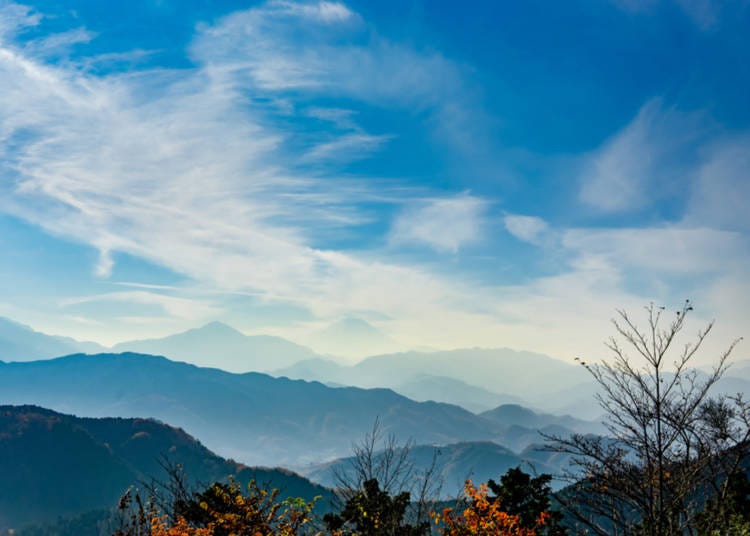
Winter is generally beyond hiking season in Tokyo. If you were hoping to climb Mount Fuji, unfortunately winter is not the time to do it—even experienced mountaineers will face serious challenges attempting to summit Fuji in the off-season. Some of the smaller hikes just outside of Tokyo, like Mount Takao and Mount Mitake to the city's west, provide manageable hikes and great scenery. In early December the autumnal foliage and its rusty hues should still be out in full force here.
There are also several options in Saitama Prefecture—Mount Hiwada and Mount Ogami—to the north of Tokyo. Even after the temperatures have dropped and the last leaves of autumn have eventually given up, the hiking scenery around Tokyo is still fantastic. Regardless of the mountain you climb, if it's a clear day, keep your eyes peeled to the south and you should catch a glimpse of Fuji's enormous, snow-tipped peak!
Alternatively, if you would prefer to stay closer to town, consider doing a day hike down in the ancient city of Kamakura, just about an hour south of Tokyo. Kamakura has become a popular spot for tourists and locals alike due to its scenic coastline and famous 11.4m tall bronze buddha. Most hikers regard Kamakura's Ten-En (天園) hiking course to be the best in the area. The hike should pose no real problems, even for beginners, while still being a decent trek. It also guides you past some wonderful ancient Japanese architecture in Kencho-ji Temple and Zuisen-ji Temple.
7. Sample Japan’s Winter Cuisine
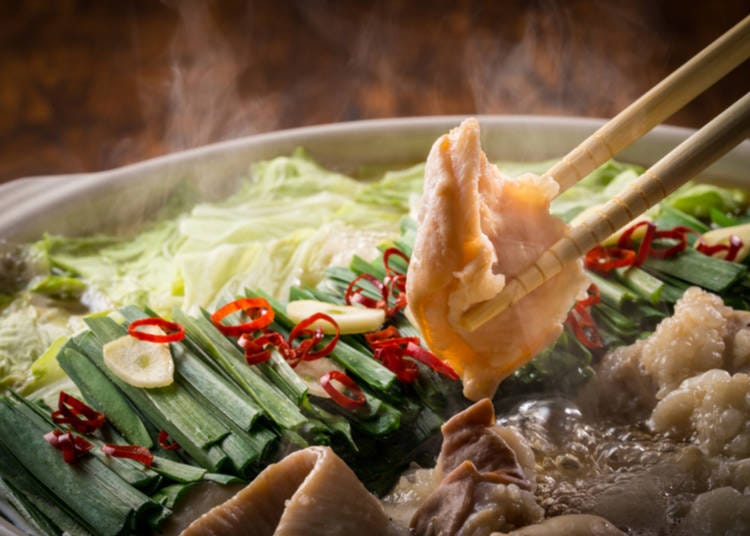
Japanese cuisine was designated an element of intangible cultural heritage by UNESCO in 2013, and Tokyo is the nation's culinary epicenter. As such, great food is easy to come by, but there's a few winter-warmer dishes that you've just got to try.
Ramen
Ramen can be found in every district of Tokyo. There are stores that are scarcely bigger than a closet and those than span several floors, some are hidden in basements and others sit in derelict looking back alleys, some seem to open arbitrarily and others never seem to close. You are literally spolit for choice. One kind of ramen in particular—tonkotsu—is particularly delicious in the winter. Tonkotsu ramen is a thick broth made from boiled pork bones with noodles, pork and several other toppings. It's also one of the most popular forms of ramen, so it should be pretty easy to come by!
Nabemono
Nabemono or nabe is a popular winter hotpot dish in Tokyo, that's great for sharing with friends. Nabemono literally means "cooking pot, things" and that's exactly what it is—lots of different foods simmering in a soupy stock inside a large cooking pot at your table. It’s an incredible winter delight that you simply must try when in Japan. While there are many variations of nabe, here a couple of the most popular;
Chankonabe – Originally served only to sumo wrestlers, this hotpot is an absolutely, calorific feast. It often features meatballs, chicken, vegetables and thick udon noodles.
Oden – This a slightly fishier variety of nabe. The stock generally consists of dashi and soy sauce. The toppings include boiled eggs, devil's tongue, daikon (Japanese mild radish) and fish or fishcakes.
8. Don’t Miss the Warm Drinks!
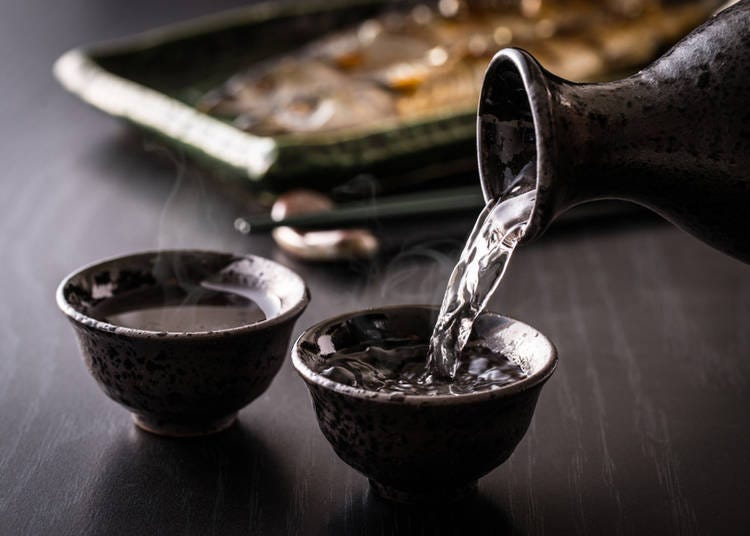
Nihonshu or sake as it is more commonly known to tourists is Japan's national alcoholic beverage. In the winter this is often served up in heated casks in restaurant and izakaya across the city, providing a delicious body-warming accompaniment to your dinner. "Atsuakate kudasai" is a useful phrase that you can use, which basically means "hot please", although more often than not this goes without saying on a winter night.
9. Take In an Exciting Day Trip
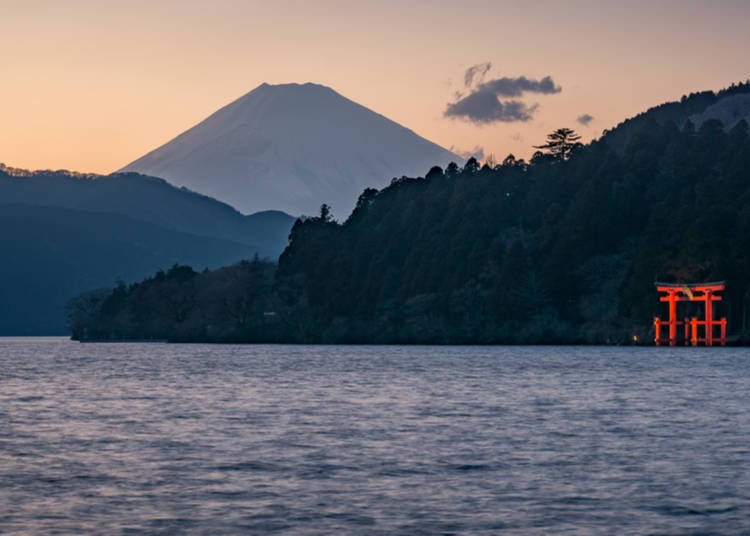
Tokyo is incredibly well connected to the rest of Honshu via the shinkansen (bullet train). As such there are some great day trips that are readily available to you.
Nikko
Nikko is a popular onsen town to the north of Tokyo in Tochigi Prefecture. It's a wonderful fusion of ancient culture with some beautiful, World Heritage shrines and temples, stunning scenery in the snowy winter months and a culinary hot spot, specializing in soba (Japanese buckwheat noodles).
Access: Nikko is only a 2-hour drive from central Tokyo by car. Alternatively, if you are going via public transport the Nikko Kunigawa train which leaves from one of Tokyo's hub stations—Ikebukuro—takes about 1 hour and 40 minutes to Shimo-Imaichi station just outside of Nikko.
Hakone
Hakone to the south, lies at the foot of Mount Fuji in Kanagawa Prefecture. At less than 100 miles from Tokyo it's one of the most popular day trips amongst tourists and locals alike. The area is chock-full of onsen baths and traditional ryokan, while also being home to one of Japan's most picturesque lakes—Lake Ashinoko. If you still need more encouragement to go, they also have a famous sake called Inoue. The local brewery offers tours and there's no better time to check it out than in the middle of the winter sake brewing season!
Access: Again, the drive is a relatively short one which should take no longer than 2 hours. Public transport is equally easy too, with the Tokaido-Sanyo Shinkansen and Shonan-Shinjku lines both heading south to Odawara. The Shinkansen from Tokyo Station to Odawara takes only 35 minutes, after which you can get a 15-minute bus to Hakone.
10. Don't miss the last train!

This is one of Tokyo's most important pro tips! The inner-city trains will stop around midnight every night, all year round. This includes all train lines, bar none. Combine this with the bracingly cold winter temperatures—that are especially likely to plummet after the sun goes down—and a reminder not to miss the last train is as important as ever. You don't want to walk home for an hour in the near sub-zero temperatures if you can avoid it, so be sure to check with the station staff (or your favorite maps app) when the last train is. Of course, there are taxis available in many of the main entertainment and nightlife districts, but they tend to bump their rates up after last train, meaning you can spend a minor fortune just trying to get yourself home!
Top photo credit: Mahathir Mohd Yasin / Shutterstock.com
David is a Northern Irish freelance writer living in Tokyo. He loves living in Japan, reading about Japan, writing about Japan and eating Japanese food. He also spends a lot of time exercising, playing rugby and risking a litany of muscle-related injuries in yoga class.
- Area
- Category
*Prices and options mentioned are subject to change.
*Unless stated otherwise, all prices include tax.
Popular Tours & Activitiess
Recommended places for you
-

This Winter, Godzilla Takes Over Haneda Airport
by: Guest Contributor
-
Ad

Preserving the Beauty of World Heritage Site Shirakawa-go for the Future Through Responsible Travel
-
Ad

(Opening in Jan 2026) 'THE SUMO LIVE RESTAURANT HIRAKUZA GINZA TOKYO!' 5 Exciting Ways to Experience the World of Sumo!
-
Ad

Complete Guide to Ueno's National Museum of Nature and Science, the Perfect Place to Visit on Rainy Days or With Children
-

How to Get Don Quijote's Exclusive 2025-2026 Winter Gift (+Tax-Free Savings)
-

Jujutsu Kaisen Takes Over JR East With a Wrapped Shinkansen This Winter
by: Guest Contributor
Inspiration for Accommodations
-

Enjoy Mt. Fuji from the Comfort of Your Room! Recommended Ryokan with Mt. Fuji View
-

Stay Near the Cherry Blossoms! Hotels for Cherry Blossom Viewing in Tokyo
-

Family-Friendly Hotels with Free Shuttle to Disneyland: Convenient Access for a Magical Stay
-

Top Ranked Hakone Hotels with Mt. Fuji View: Enjoy Stunning Scenery from Your Private Space
-

Convenient Tokyo Hotels with Airport Shuttle: Ideal for Families and Heavy Luggage
-

Stunning Tokyo Tower View Hotels: Enjoy Spectacular Scenery from Your Private Space
-

Convenient Asakusa Hotels with Kitchens: Ideal for Extended Family Visits
-

Experience Luxury: Hakone's 10 Best Five-Star Accommodations
-

Enjoy Mt. Fuji Autumn Leaves! Top Hotels Near the Popular Autumn Leaves Corridor
-

Experience Hakone Fall Foliage from Your Room with Stunning Views
-

Japan Braces for Snowstorm Shock Thru January 10—Here's How to Travel Safely
-

Winter Sightseeing in Tokyo Done Right: What to Know and What to Bring
-

Autumn in Japan 2025: Fall Foliage Forecast & Where to Enjoy the Colorful Leaves (+Tour Info)
-

Shine Bright This Winter: 15 Must-See Tokyo Illuminations (2025-2026)
by: Kaori Kimura
-

Healthcare in Japan for Tourists: What to Do When You Get Sick or Injured in Japan
-

8 Unfamiliar (But Totally Normal) Customs in Japan!
- #best ramen tokyo
- #what to buy in ameyoko
- #what to bring to japan
- #new years in tokyo
- #best izakaya shinjuku
- #things to do tokyo
- #japanese nail trends
- #what to do in odaiba
- #onsen tattoo friendly tokyo
- #daiso
- #best sushi ginza
- #japanese convenience store snacks
- #best yakiniku shibuya
- #japanese fashion culture
- #best japanese soft drinks



















